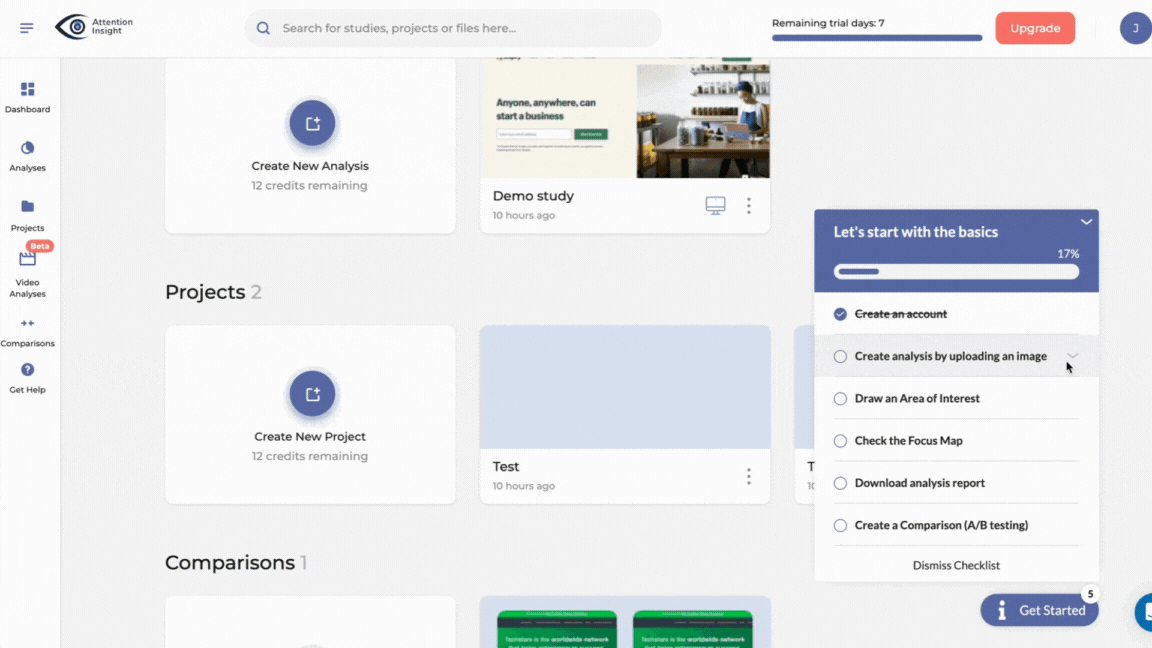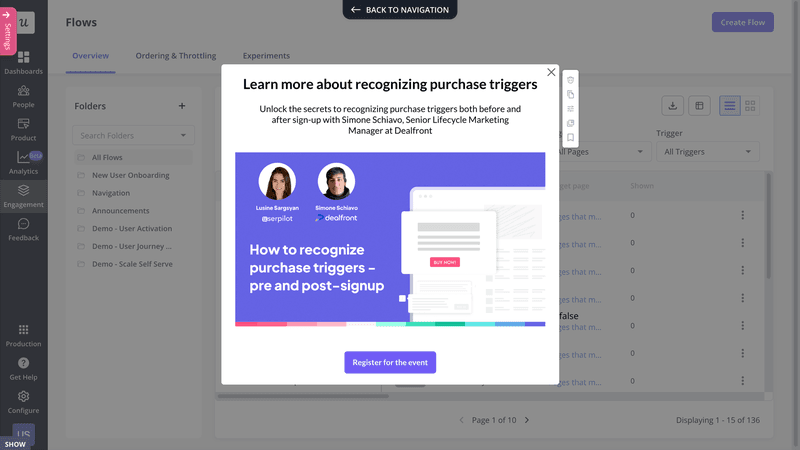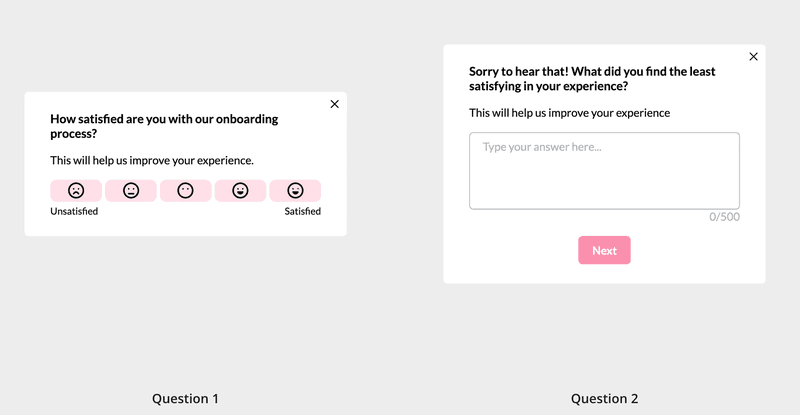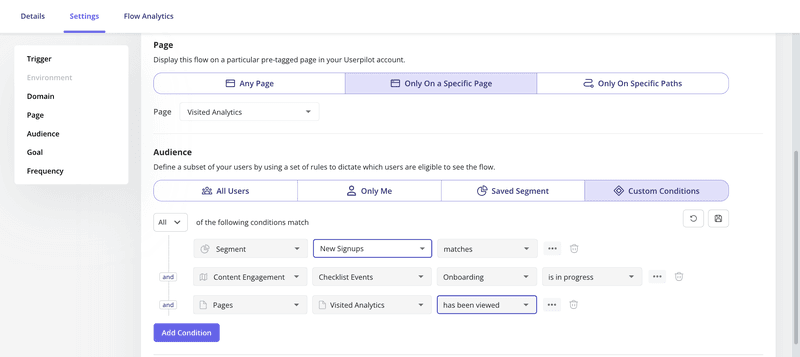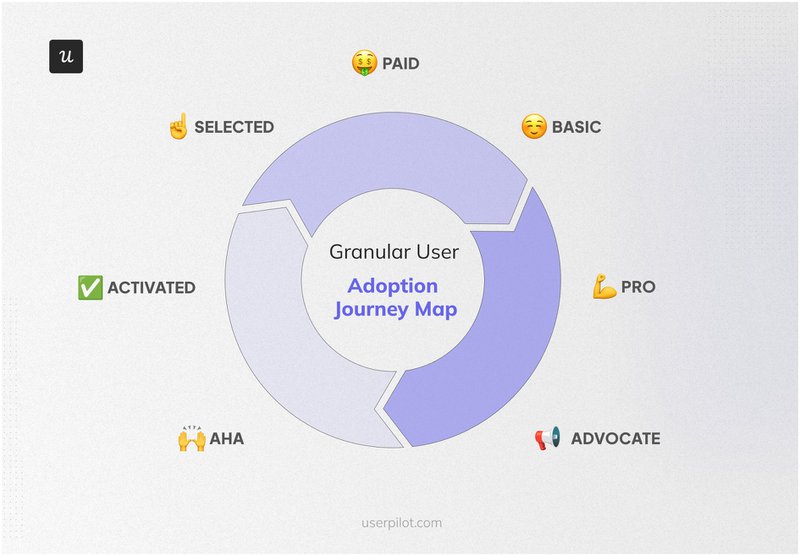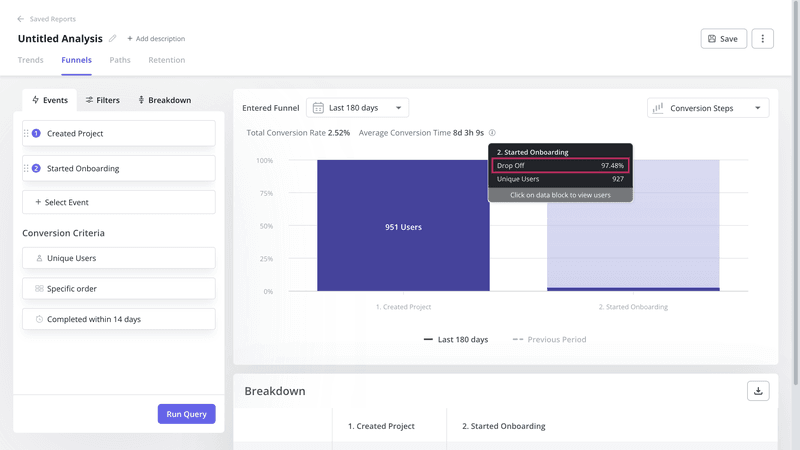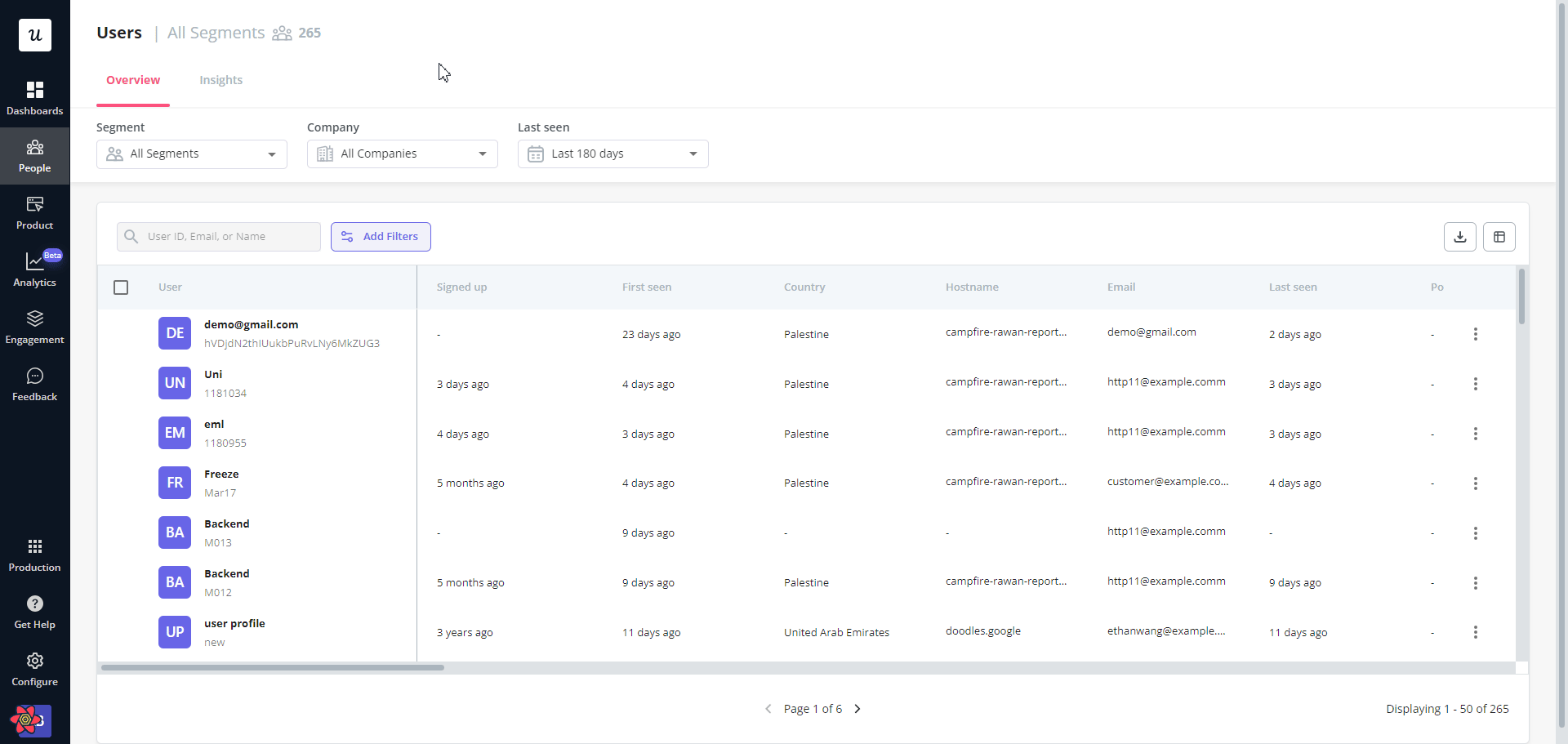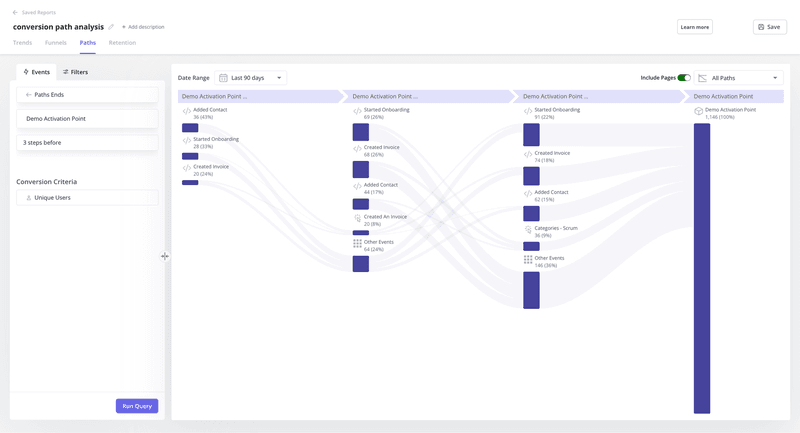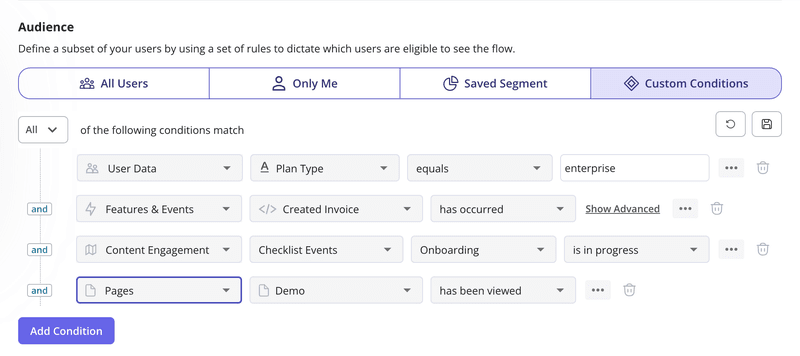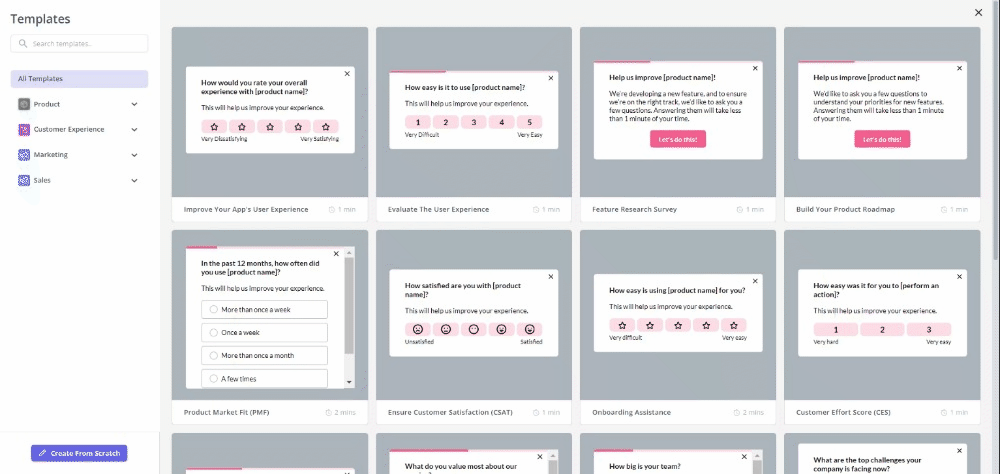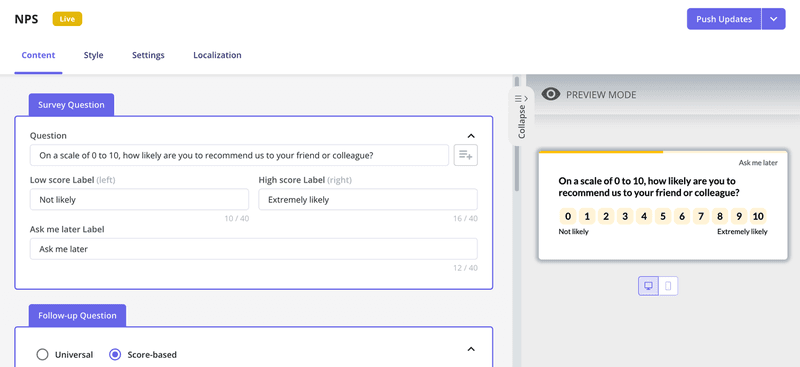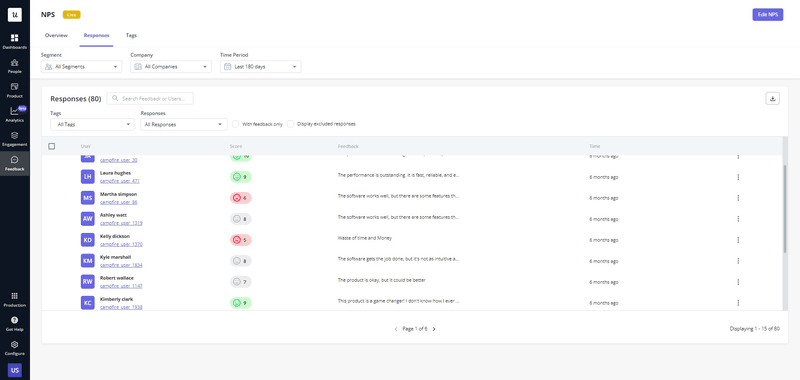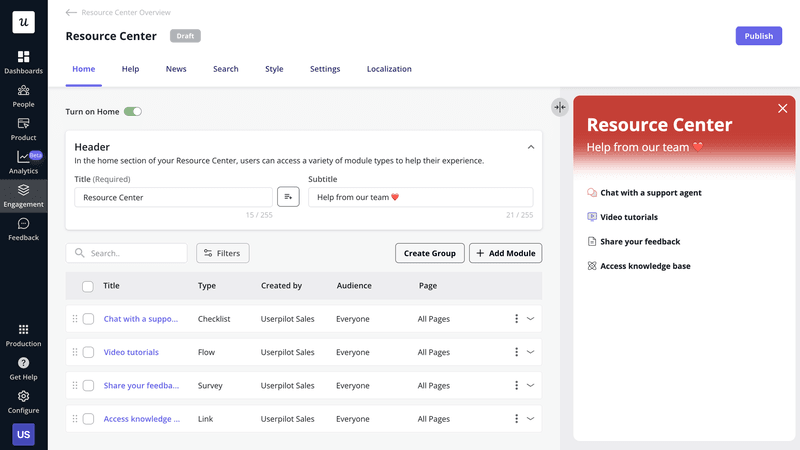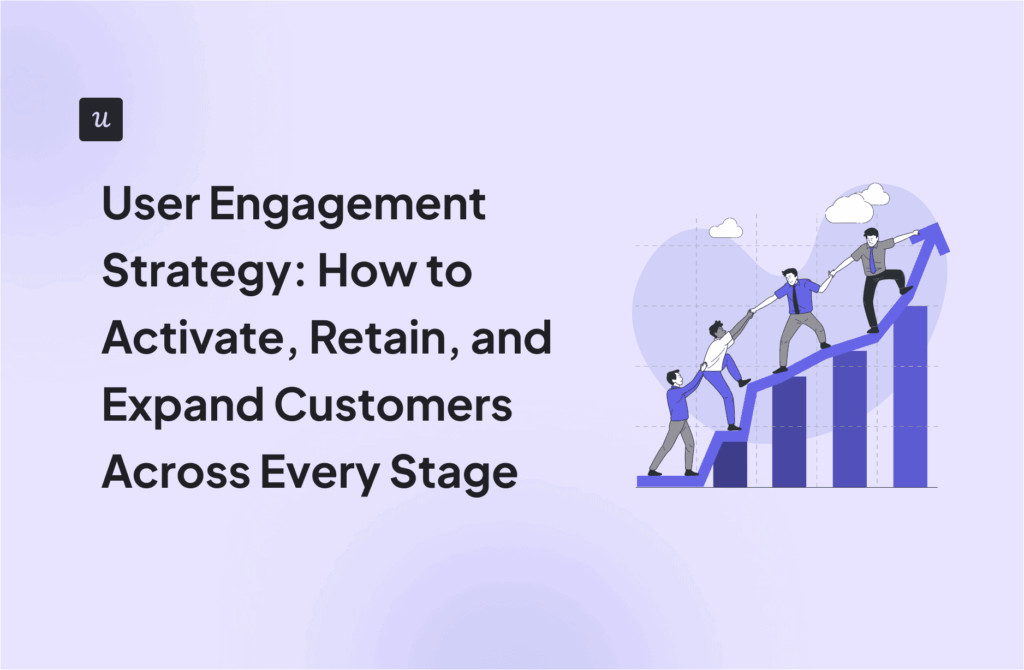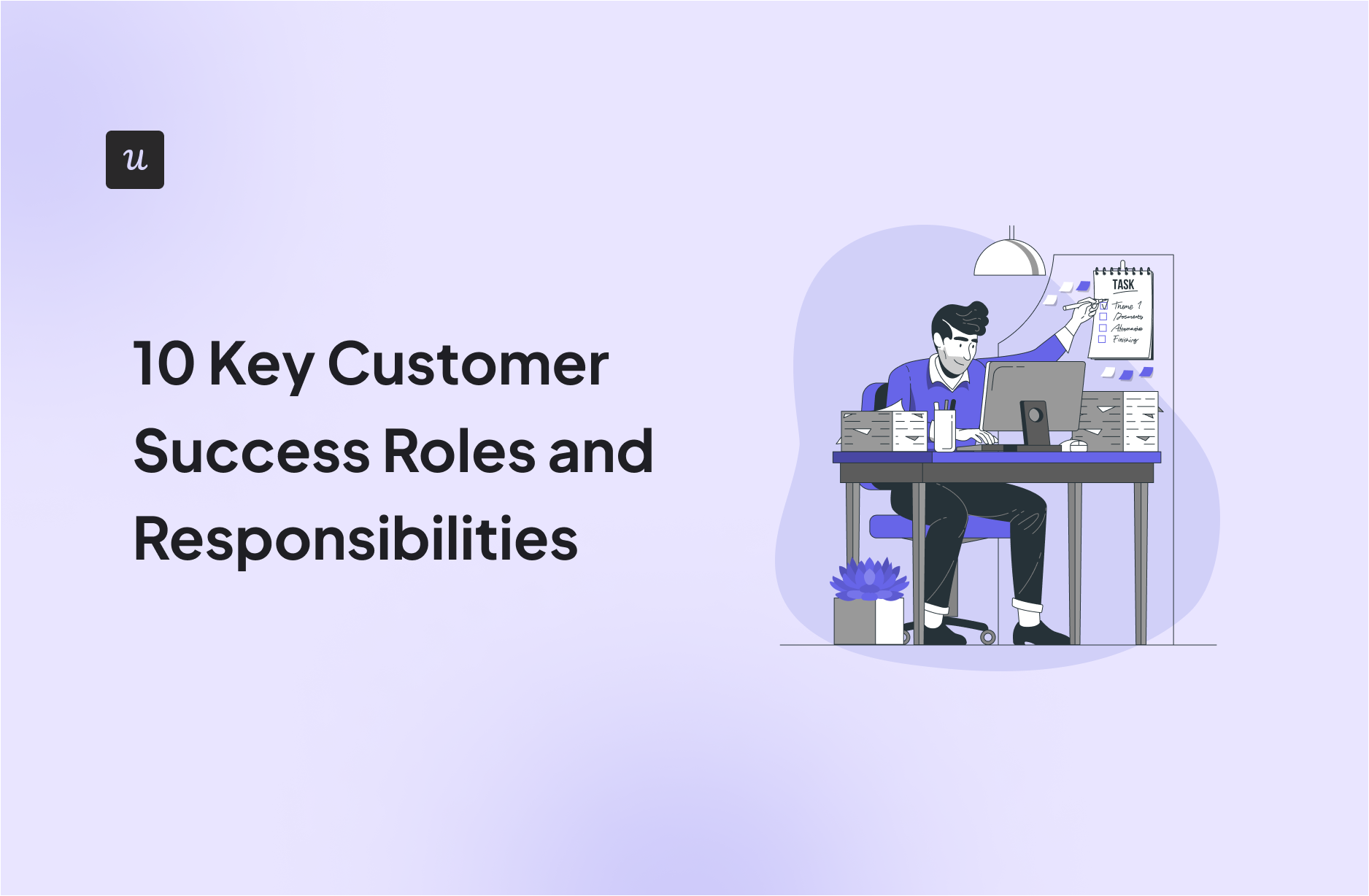
Since customer success roles are relatively new, companies don’t always have a clear idea of what responsibilities are appropriate for a customer success manager (CSM).
As a result, customer success managers end up with more tasks than they can handle—making it harder to focus on helping users engage with the product and achieve success.
So whether you’re hiring for a customer success (CS) position or applying for a role in this department, this guide will give you clarity on what CS managers do and how to make the most out of your time.
What’s your primary motivation for exploring customer success roles?
Try Userpilot Now
See Why 1,000+ Teams Choose Userpilot

Customer success roles summary
- Customer success ensures customers get their desired outcome when using your product. And it mainly involves increasing retention, preventing churn, building loyalty, and generating account expansion revenue.
- Customer success teams are responsible for ensuring your customers achieve their desired outcomes while using your product which involves:
- Managing churn and increasing customer retention.
- Creating a minimum-viable onboarding process with user onboarding tours and in-app guidance.
- Educating customers with in-app help and improving customer experience.
- Driving account expansion with contextual offers and growing lifetime value.
- Collecting customer feedback and closing feedback loops.
- Building relationships by providing consistent value and fostering customer loyalty.
- Mapping customer success journeys to spot and remove friction.
- Building and implementing the right customer success playbook.
- Liaising with the sales team to understand customer needs.
- Liaising with the marketing team for better user insights.
- Get a Userpilot demo and see how you can make your customer success work easier.
What is customer success?
Customer success is the practice of ensuring customers get their desired outcome when using your SaaS.
Customer success goals include increasing customer retention, preventing churn, building loyalty, and expanding satisfaction with the product.
Common customer success roles
Customer success plays a crucial role in ensuring customer satisfaction and driving long-term business growth.
Here are some common customer success career opportunities:
Customer Success Manager (CSM):
- Responsible for building and maintaining relationships with a portfolio of customers.
- Acts as a trusted advisor, providing guidance and support throughout the customer lifecycle.
- Ensures customer satisfaction and retention by proactively addressing their needs and concerns.
- Works closely with sales, marketing, and product teams to deliver a seamless customer experience.
Customer Success Representative (CSR):
- Provides direct support to customers, addressing their inquiries and resolving issues.
- Assists customers with onboarding, training, and adoption of products or services.
- Collects customer feedback and monitors customer health to identify potential risks.
- Works closely with the customer success team to ensure customer satisfaction.
Customer Success Analyst:
- Analyzes customer data to identify trends, opportunities, and areas for improvement.
- Develops customer segmentation models and creates personalized customer journeys.
- Measures customer satisfaction and retention metrics.
- Provides insights to the CSM team to enhance customer experiences.
Customer Success Operations Manager:
- Oversees the overall customer success function, including team management, process optimization, and tool selection.
- Develops and implements customer success strategies and best practices.
- Manages customer success metrics and reporting.
- Collaborates with other departments to ensure a seamless customer experience.
Customer Success Specialist:
- Focuses on a specific customer segment or product area.
- Provides specialized support and expertise to customers within their area of responsibility.
- May be responsible for upselling or cross-selling additional products or services.
Customer Success Coordinator:
- Provides administrative support to the customer success team.
- Manages customer data and information.
- Assists senior customer success manager with onboarding new customers and resolving customer issues.
Customer onboarding manager:
- Creates effective onboarding plans tailored to different customer segments.
- Coordinates teams responsible for various aspects of the onboarding process.
- Tracks key metrics and analyzes onboarding effectiveness.
- Continuously refines onboarding processes based on customer feedback and data.
- Works closely with sales, marketing, and product teams to ensure a seamless customer experience.
These are just some of the common customer success roles. The specific responsibilities and titles may vary depending on the size and industry of the company.
10 Key responsibilities of a customer success team in SaaS companies
Customer success teams are responsible for ensuring your customers achieve their desired outcomes while using your product.
Now let’s go over each of the responsibilities in more detail!
💡Editor’s note: You might also want to read our article on the customer success playbook here.
1. Churn management and customer retention
A customer that churns is a customer that didn’t achieve success.
Hence, a CSM’s top priority is to prevent churn as much as possible.
The best way to prevent churn is with proactive engagement, anticipating the customer’s needs and solving problems before they happen, ultimately increasing customer retention.
For this, you need to use data to understand what drives users to engage, track churn rates, and then act on it.
For example, you can use a user engagement tool to track feature engagement with autocapture and reach out to users who are not using core features.
2. Customer success teams are responsible for the minimum viable onboarding process
User onboarding plays an essential customer success role. It sets the stage for a positive relationship, drives adoption and usage, reduces churn, improves customer satisfaction, and provides valuable insights for product improvement.
And it’s the customer success manager’s responsibility to help the team achieve that goal. You can cooperate with a customer onboarding specialist to improve their efforts.
The onboarding process doesn’t have to be long. It must guide users on the shortest path to success—and you do this with minimum-viable onboarding.
The goal is simple: Exceeding customer expectations and getting users to the activation point as soon as possible.
For example, you can show in-app help like a short “getting started” checklist once new customers sign up:
Attention Insights builds an onboarding checklist using Userpilot. Learn more about how they improve their onboarding by using Userpilot!
3. Educate customers and improve customer experience
Educating users about your product is a never-ending activity for the entire customer success team.
When it comes to product education, you can guide users with in-app guides, video tutorials, and a knowledge base. Or also with 1-on-1 strategy sessions, where you can personalize your customer’s path to success.
Ultimately, the best channels will depend on your customer engagement model.
Product education also ensures users adopt new features when you launch them by showing widgets such as tooltips, hotspots, and modals inside your app.
For example, you can announce a training webinar inside your product by including a banner that doesn’t disrupt the customer experience:
4. Driving account expansion and increasing lifetime value
As customers progress through their journey, it’s your job as a CSM to understand when and how an account expansion would be beneficial.
This means you’re responsible for generating revenue with account expansions
It might sound like a big responsibility on your shoulders, but the good news is that you only need to offer an account expansion when the user truly needs it (no need to push for it).
Like in this upselling example, as users reach the feature usage limit, a contextual upgrade prompt will be triggered.
5. Collecting customer feedback and closing the feedback loop
As a CSM, you need to collect both active and passive feedback so you can:
- Identify what generates the most friction.
- Check how satisfied your customers are with your product.
- Understand what’s making users churn.
- Improve your product continuously through the feedback loop and increase customer satisfaction.
There are many channels to collect feedback, such as NPS surveys, customer satisfaction surveys, in-app feature surveys, reviews, and more—think of this contextual onboarding survey as a good example:
6. Relationship building and driving customer loyalty
Customer loyalty is only achieved when users succeed.
This is why building trust with customers and fostering loyalty is vital for a CSM. Although other teams also help with loyalty by implementing loyalty programs and rewards (nothing wrong with this), most customer success teams focus more on the product experience.
Why? Because personalization can go a long way when building relationships.
You can segment your users based on in-app activity and events and then offer hyper-personalized guidance and relevant content that helps users stick with your product and convert into loyal customers.
7. Mapping customer success journeys and removing friction
Since your job as a CSM is to drive customers through the shortest path to success, you need a clear roadmap to know how to achieve goals repeatedly.
That’s why you must build a customer success journey map.
The goal of your journey map isn’t only to help users get from one milestone to the next. It also allows you to identify and remove friction whenever the user faces an obstacle.
For example, you can set up event tracking across touch points of your journey map and later use the recorded events in a funnel analysis to visualize user progress.
8. Building and implementing the right customer success playbook
Mapping the user journey isn’t enough. You also need to create a customer success playbook to put it into use.
However, a common mistake when implementing playbooks is not knowing how to handle automation. So which processes should you automate, and what should be in person?
The reality is that it depends on how complex your product is.
But in short: Unless your product is too simple (for a low-touch model) or too complex (for a B2B high-touch model), a tech-touch model will offer the right balance between automation and personal interactions for your SaaS.
9. Liaising with the sales team to understand customer needs
The best customer success teams collaborate with sales. The reason is simple:
Your sales team knows your customers better than you.
That’s why it’s crucial to have regular communication with a sales rep so you can understand:
- The needs your customers have.
- Which objections are often present in their mind.
- Their goals with your product.
With this, you can do a better job of helping them succeed.
10. Liaising with the marketing team for better user insights
Marketing and CS can collaborate to do customer research and understand your user persona better.
This way, you can give insights on who are the best customers to the marketers, and marketing can focus on generating leads with great customer fit
For example, by examining user and company profiles, you gain insights into their in-app behavior, preferred features, and overall satisfaction with your product.
Utilizing this information, you can tailor in-app marketing strategies i.e. personalized upgrade prompts and product updates to better engage your users and enhance their experience.
For more intimate collaboration, you can share the same CRM, so everyone is on the same page—or even use other customer success tools to collect data and automate actions.
While some companies use separate CRMs and customer success tools, others opt for a more integrated approach. Certain CRMs, like HubSpot, have built-in customer success management features that allow teams to collect customer data, automate key tasks, and gain actionable insights – all within a single platform.
HubSpot’s customer success software empowers CS managers/teams by providing a complete view of the customer and streamlining workflows with capabilities like easy-to-understand insights, health scores, and customer outreach.
HubSpot aims to help CS managers and teams proactively drive retention and growth. This one-stop solution and integrated approach can save time, improve visibility across teams, and eventually lead to better customer experiences.
How Userpilot can help customer success managers increase customer satisfaction and drive success
As a CSM, it’s easy to get overwhelmed with all the tasks on your plate.
That’s why it’s essential to use customer success software, so you can save time and focus on important tasks.
Here’s how Userpilot can help your CS team achieve your goals.
Track and analyze how customers progress through the journey
If you built a detailed customer journey map, you can track how users reach specific milestones with path analysis:
Monitor how users reach activation using path analysis in
Here, you can spot where friction is and then fix it, so users get from one milestone to the next without requiring your assistance (thus saving your time).
Automate customer education with in-app training
If you already have the resources to educate users about your product, you can personalize in-app experiences based on specific segments and in-app behavior.
With Userpilot, you can create flows and choose specific triggers in order to make sure you reach the right users.
Collect customer feedback and understand user sentiment
If you are looking for ways to collect feedback, Userpilot has many options.
One is to create microsurveys to ask users for feedback at each touchpoint.
But more than that, you can also conduct quantitative and qualitative research with NPS surveys:
After collecting the customer data, tag your NPS responses from the open-ended question to identify what makes a customer a promoter or a detractor.
Provide support 24/7 with a self-service help center
If you’ve been creating helpful tutorials and guides, you can use Userpilot to implement self-service support.
This means adding an in-app help center where users can have access to support without leaving the product—reducing friction whenever a customer faces a problem.
Conclusion
Customer success is a fast-growing career and will likely have more demand in the future so keep an eye on the most wanted customer success roles.
That’s why you need to embrace good practices as a CSM—so you can stand out and secure your job.
So if you want to excel at customer success, get a Userpilot demo and see how you can make your job easier.
FAQs
What is the customer success role?
A customer success role involves ensuring customer satisfaction and driving long-term business value. Customer success professionals work closely with customers to understand their needs, provide support, and optimize their experience with a product or service.
What are the job titles related to customer success?
There are various customer success jobs associated with customer success, including:
- Customer Success Manager (CSM)
- Customer Success Representative (CSR)
- Customer Success Analyst
- Customer Success Operations Manager
- Customer Success Specialist
- Customer Onboarding Manager
What does a customer success manager do?
To ensure success, a good customer success manager needs to build deep relationships with customers by handholding them throughout the user journey.
However, your exact tasks as a CSM will drastically depend on your product, your company’s stage, and the type of clients you have to support. You will also work with other internal members including Sales, Support, and Professional Services for your daily tasks.
Sometimes you’d spend most of your time on calls with clients.
But in other companies (particularly in SaaS), you need to rely on in-app communication and automation to scale customer success to every user.
What does a customer success specialist do?
A customer success specialist is typically responsible for:
- Providing direct support to customers
- Assisting with onboarding and training
- Resolving customer issues and inquiries
- Collecting customer feedback
- Identifying upselling and cross-selling opportunities
Customer success managers’ soft skills and qualifications
To perform well as a CSM, you need a good set of soft skills that are required for getting (and retaining) this job, including:
- Leadership. To lead customer success initiatives that will help achieve goals faster.
- Problem-solving. Since your time will be spent solving users’ obstacles and selling them the right solutions.
- Communication. Since this is a very client-facing job, your ability to communicate effectively is essential to perform well.
- Empathy. Which you’ll need if you want to understand your customers.
- Industry knowledge. To be helpful, you must familiarize yourself with your customer’s business model and common pain points.
- Technical savviness. So you can deeply understand your product and ensure that users are on the right track.
- Collaboration. The best customer success teams regularly collaborate with sales, marketing, and support teams to exchange data and create more thoughtful strategies.
Customer success teams vs. customer support team
Although CS and support teams overlap in having to assist users regularly, their differences are very noticeable:
- Customer success is more relationship-driven, strategic, and analytical. While support is more tactical and there’s often no room to nurture long-term relationships.
- CSMs can leverage personal relationships to provide strategies and offer contextual account expansions, renewals, upsells, and so on (which support can’t do).
- Although proactive support is a thing, support teams tend to be reactive. In comparison, customer success is more proactive in preventing problems and solving them before they happen.
What are the three types of customer roles?
Customers can be categorized into three main roles:
- Champion: The primary decision-maker within an organization.
- Economist: The individual responsible for justifying the purchase and budget.
- End-User: The person who directly uses the product or service.


